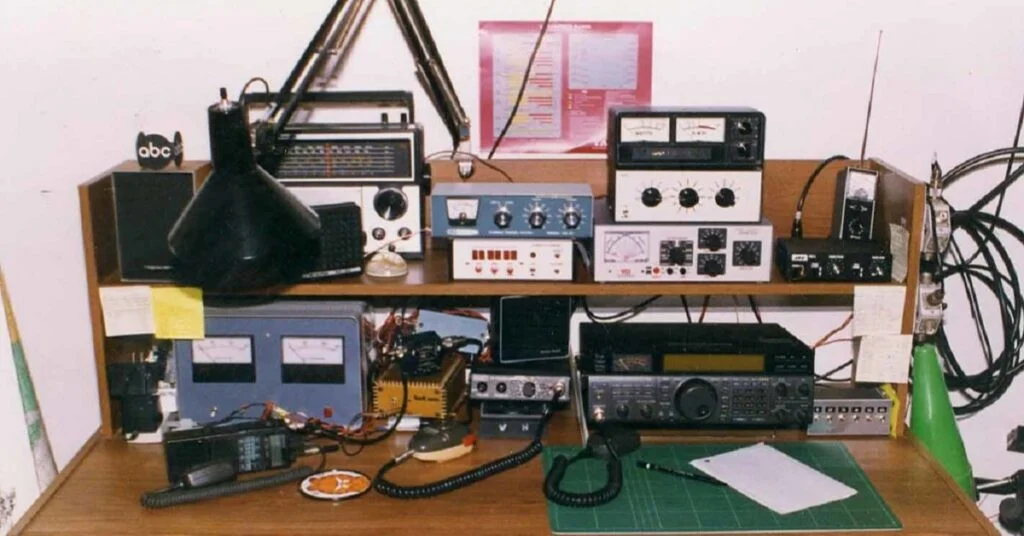A radio base station plays a vital role in communication networks, whether for emergency services, businesses, or amateur radio operators. Setting up a radio base station setup correctly ensures clear communication, reliability, and compliance with regulations. This guide explores the key considerations and best practices to help you establish a seamless radio communication system.
Understanding the Basics of a Radio Base Station
A radio base station consists of several essential components:
- Transmitter and Receiver (Transceiver): Sends and receives radio signals.
- Antenna: Facilitates signal transmission and reception.
- Power Supply: Provides consistent power to the system.
- Cabling and Connectors: Ensures efficient signal transfer with minimal loss.
- Control Equipment: Allows the operator to manage and monitor communications.
- Antenna Mounting Structure: Secures the antenna for optimal performance.
Key Considerations for Radio Base Station Setup
1. Location Selection
Choosing the right location is critical for signal coverage and clarity. Consider the following factors:
- Elevation: Higher ground improves signal reach and reduces interference.
- Obstructions: Trees, buildings, and mountains can weaken signals.
- Proximity to Users: The station should be near the area where communication is required.
- Access to Power and Internet: Essential for modern base stations that integrate digital connectivity.
- Climate Conditions: Areas prone to extreme weather should have protective measures.
- Security: If the base station is in a remote location, install security cameras or fencing.
2. Frequency Selection and Licensing
Different radio frequencies serve various purposes. It’s crucial to:
- Determine the Best Frequency Band: VHF (Very High Frequency) and UHF (Ultra High Frequency) are common for public and commercial use.
- Obtain Necessary Licenses: Regulatory authorities like the FCC (in the U.S.) require licenses for certain frequency bands.
- Minimize Interference: Selecting a less crowded frequency prevents signal disruption.
- Understand Bandwidth Requirements: Ensure the selected frequency supports the intended communication range and data transfer rate.
3. Choosing the Right Antenna
The antenna affects the station’s signal strength and coverage. Key aspects include:
- Antenna Type: Omnidirectional antennas broadcast in all directions, while directional antennas focus the signal in a specific area.
- Gain and Power Handling: Higher gain antennas enhance signal reach but require careful positioning.
- Mounting Considerations: Proper height and orientation improve performance.
- Weatherproofing: Choose antennas designed to withstand extreme conditions.
- Compatibility: Ensure the antenna is compatible with your transceiver and frequency range.
4. Power Supply and Backup Solutions
Reliable power is crucial for continuous operation. Consider:
- Uninterruptible Power Supply (UPS): Protects against power failures.
- Solar Panels or Generators: Useful for remote or emergency setups.
- Voltage Regulation: Prevents damage from power fluctuations.
- Battery Backup: Offers emergency power if the main source fails.
- Energy Efficiency: Use energy-efficient components to extend battery life and reduce costs.
5. Cabling and Connectivity
Poor cabling can cause signal loss and interference. Best practices include:
- Using High-Quality Coaxial Cables: Reduces signal degradation.
- Minimizing Cable Length: Shorter cables maintain better signal integrity.
- Shielding and Grounding: Prevents interference and enhances safety.
- Regular Cable Inspections: Look for wear and replace damaged cables promptly.
- Proper Labeling: Organizing and labeling cables simplify troubleshooting.
6. Environmental Protection and Durability
Since base stations often operate outdoors, consider:
- Weatherproofing: Protects against rain, wind, and temperature fluctuations.
- Lightning Protection: Grounding systems and surge protectors prevent damage.
- Rust-Resistant Materials: Ensure longevity in harsh environments.
- Proper Ventilation: Prevents overheating of electronic components.
- Pest Prevention: Sealing gaps and using protective covers minimize damage from rodents and insects.
Best Practices for Optimizing a Radio Base Station
1. Proper Installation and Mounting
- Secure the Antenna: Proper mounting prevents movement that could affect signal quality.
- Check Alignment: Ensure directional antennas face the right direction.
- Use Sturdy Poles or Towers: Reduces signal disruption due to movement.
- Routine Structural Checks: Inspect towers and mounts for stability.
- Corrosion Prevention: Apply protective coatings on metal parts to prevent rust.
2. Regular Maintenance and Upgrades
- Inspect Equipment Periodically: Look for wear and tear, corrosion, or damage.
- Test Signal Strength and Quality: Use frequency analyzers to check performance.
- Upgrade Outdated Components: Modern technology can improve efficiency and reliability.
- Monitor System Logs: Keep records of performance to detect potential issues early.
- Schedule Preventive Maintenance: Regular servicing extends equipment lifespan.
3. Signal Testing and Optimization
- Conduct Propagation Tests: Helps determine the best antenna placement.
- Adjust Transmission Power: Prevents unnecessary interference with other stations.
- Use Signal Boosters if Necessary: Enhances weak signals in challenging areas.
- Monitor Weather Effects: Changes in humidity and temperature can impact signal transmission.
- Optimize Channel Usage: Reducing congestion improves clarity and reduces lag.
4. Security and Compliance
- Encrypt Communications (If Necessary): Prevents unauthorized access.
- Follow Regulatory Guidelines: Adhering to local and national laws avoids legal issues.
- Monitor Usage: Prevents frequency congestion and interference.
- Physical Security Measures: Install locks and surveillance cameras to protect equipment.
- Cybersecurity Measures: If your base station is connected to a digital network, implement firewalls and encryption protocols.
5. Training and Documentation
- Train Operators: Ensures effective use of the system.
- Keep System Logs: Documents changes, maintenance, and issues for future reference.
- Have a Troubleshooting Plan: Enables quick resolution of problems.
- Develop Emergency Procedures: Operators should know how to respond to outages and technical failures.
- Create User Manuals: Comprehensive documentation assists with future training and troubleshooting.
Conclusion
A well-planned radio base station setup enhances communication efficiency, reliability, and security. By carefully selecting the location, choosing appropriate equipment, ensuring power reliability, and adhering to best practices, you can establish a robust radio communication network. Regular maintenance and optimization further ensure long-term effectiveness. Whether for emergency services, businesses, or personal use, investing time and resources into a proper setup pays off in reliable and clear communications. A proactive approach to maintenance, security, and upgrades ensures that your base station remains operational for years to come.
